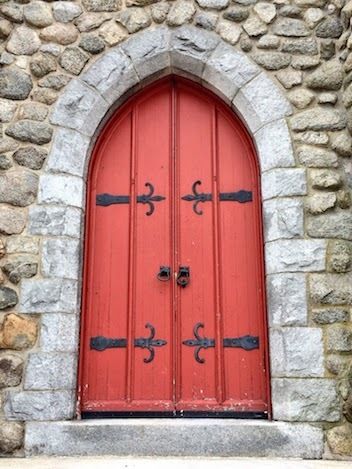When storms like Hurricane Harvey and Irma hit, these events are not respecters of persons. Bad weather lands on people of all economic classes, races, faiths, genders, legal statuses, and sexual identities. While extreme weather does not discriminate, we live in a society that does. Everyone in the paths of Harvey and Irma suffer and will continue to do so—but not equally. Some suffer more than others.

I am thinking of three different vulnerable people and their experiences of recent extreme weather. These are fictional profiles based on people who no doubt live in all over the USA.
Luz: 29 year old mother of three, ages 4, 7, and 10. Luz is an undocumented resident living in Houston. Two of her children were born in the USA. Her husband, Octavio, who is also undocumented, is in California as a seasonal farm worker.
Xander: 16 year old gender non-binary teen from the Ysleta del Sur Tribe (also known as the Tigua Tribe) located near El Paso. Xander moved to Houston and has been living on the streets connecting with other transgender and gender non-binary people. Xander also suffers from asthma and does not have health care.
Diana: 84 year old white lesbian in Oakland, CA. Diana lives alone since her partner, Susan, passed away in 2010. She lives on a tight budget and receives only her own social security benefits since she was not eligible to receive those of her partner of 43 years. She requires a walker and at times a wheelchair to get around.
As soon as the media warned of the impact Harvey would have on Houston and surrounding areas, I immediately wondered: Who might avoid the help offered because they fear the negative consequences of what might come with that help?
During Harvey many undocumented immigrants and residents feared that receiving help during the storm would ultimately lead to deportation. Which is riskier—riding out the hurricane or setting off a legal storm? To highlight these risks, Esquire Magazine published An Undocumented Journey Through Harvey. Lorena O’Neil writes about Maria, (the magazine withheld the last names of undocumented immigrants in the piece) and the epic journey she endured to get help for her family.
The ICE and U.S. Customs and Border Protection put out a joint statement over the weekend in light of the storm saying they wouldn't target undocumented immigrants at evacuation sites, shelters, or food banks. Houston Mayor Sylvester Turner went as far as saying he would personally defend any undocumented immigrants who faced deportation as a result of seeking help in the storm. These reassurances never reached Maria, and she almost didn't go to a shelter due to her fear.
Maria ultimately found help, but undocumented residents like Maria, or Luz above, have the burden of deciding between physical harm and legal consequences.
As the waters recede, the risks do not end. The Center for Disease Control warns of multiple health risks that survivors face including infectious diseases from sewage that mixes with the flood waters and a host of diseases from the multitude of mosquitos that thrive in the hot, humid conditions with unlimited incubators of standing water. Everyone is vulnerable to these diseases, but most residents do not worry that turning to medical professionals or government-run emergency centers will lead to deportation.
In Houston there are many undocumented immigrants and residents who face this challenge. Lorena O’Neil writes, “Pew estimates that the Houston metropolitan area is home to roughly 575,000 undocumented immigrants, the third largest population in the United States behind Los Angeles and New York. Even before the storm, the undocumented community was on high alert, due to Senate Bill 4, an anti-immigrant measure that allows local police officers to ask about a person's citizenship status and had been scheduled to go into effect… (It has since been temporarily halted.)” The legal storms grow even more intense with the repeal of DACA, something many Latinos see as a racist move from a White House that is hostile to them. How many of undocumented residents avoid the help they need?

Man Made These Storms by Peterson Toscano
Another vulnerable population during extreme weather events are LGBTQ people. Like undocumented immigrants and residents, some LGBTQ people avoid medical assistance and shelter because of the troubles they often encounter.
Like Xander above, around 40% of homeless youth in most US cities are LBGTQ. According to Carl Siciliano, director of the Ali Forney Center, an LGBTQ youth homeless center, “ In the USA there are fewer than 500 shelter beds dedicated to a homeless LGBT youth population that is estimated to number in the hundreds of thousands.”
These are young people who avoid shelters, many of which are run by churches. Homeless shelters are also “gendered” spaces where people are housed according to the sex that appears on a government issued ID. Many young transgender people do not have identification that correctly identifies as they experience it and see it for themselves. In many states it is complicated and expensive to change a gender marker on birth certificates and other government-issued IDs. Instead of facing the hassles, humiliations, and harassment they routinely encounter, many end up avoiding shelters altogether. During an event like Harvey, there may be even greater risk in the chaos of emergency shelters. So, what happens when the storms come? Where do these kids go?

All Welcome—Some Exceptions Apply
Even in mild weather many transgender people struggle to get adequate healthcare. It is common for a transgender person with a straight forward issue like the flu to suddenly encounter medical professions who inappropriately hone in on the patient’s gender identity and transition experiences then turn these into the issue at hand. What started out as a simple trip to the doctor can lead to rude and dehumanizing treatment. As a result, many transgender people work hard to seek out medical personnel who will treat them professionally and respectfully. During extreme weather events when health problems rise from the immediate storm and its aftermath, these transgender people may not be able to access their trusted primary care physicians and have to instead risk unprofessional and even abusive treatment from strangers who are not informed or sensitive to the needs of transgender patients.
While the flooding from Hurricane Harvey continued to spread, I also grew concerned for LGBTQ seniors in Northern California. In the Bay Area they experienced unheard of temperatures of up to 104 degrees F. Because of historic discrimination, many of LGBTQ seniors do not have children or are estranged from their children and their grandchildren. Because of the challenges they face in long-term care facilities, most are reluctant to live in retirement homes. Like Diana above, LGBTQ senior often have less income than other seniors. These issues of isolation and limited resources make LGBTQ more vulnerable during extreme heat events.
With climate change, we are going to see more extreme heat events. Once the temperature rises above 96 degrees – it becomes deadly for the very young and the very old. The only real solution is to get to a cooler place, which is expensive. How many seniors will just try to ride it out? One way to build a stronger LGBTQ community is for LGBTQ centers, affirming congregations, and health professionals to keep lists of the LGBTQ seniors in the area. Before, during, and after extreme heat events, volunteers can check in with these seniors. Just like community groups can create and maintain homeless shelters and emergency shelters that are LGBTQ-friendly, organizations can create cooling centers that promote the equality of LGBTQ seniors and build community.
During times of extreme weather, every person, every family, every demographic face health risks. Communities need to be strong and prepared before the extreme weather hits. We must recognize some people and groups are even more vulnerable than others during times of extreme weather. People embody multiple identities at the same time. The overlapping and intersections of these identities can multiple the risks people face. The queer person of color who is an undocumented resident encounters trouble upon trouble . While it is true that we are all in the same boat together, we are not all on the same deck.
As we daily seek to promote equality for LGBTQ people, seniors, and undocumented residents, we do well to consider how to make our systems just and prepared as extreme weather grows in frequency and strength. For health professionals who are serious about promoting equality, it is essential that we include the people most affected by our decisions and commit to hear from people who represent vulnerable populations. By including a diverse range of participants at the table, health providers and first responders will make more informed and equitable choices in protecting and serving everyone.
